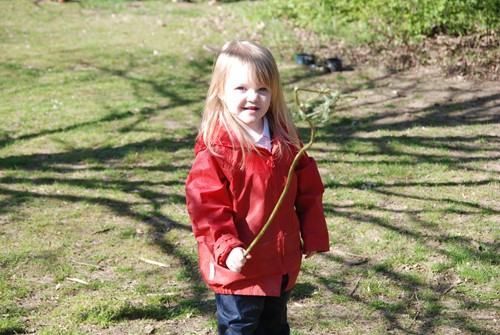Lost Words and Worlds….. is it Time to Say Goodbye to the Buttercup?
Times are changing but does this mean our children will forget how amazing the natural world can be?
In 2012, the Oxford University Press published a new Junior Dictionary. Making space for newly-emerging words – analogue, broadband, chatroom – publishers removed words ‘fallen into disuse’, including acorn, buttercup and conker.
A furore followed; not because the technology-related words were not relevant but because many felt that losing the nature-orientated words would mean losing the link between the natural world and future generations.

Many people believe that the link has been lost already, that the natural world has become a lost world to the young. The term ‘Nature Deficit Disorder’ – coined by Richard Louv, in 2005 – has been widely used to describe the detrimental effects, on physical and mental health, of children’s disengagement from nature.
The stats paint a concerning picture – with a third of under-16s being overweight and an ‘epidemic of mental illness’ afflicting the young. In response, many efforts ensue to re-engage children with the Great Outdoors. Amongst the initiatives, an illustrated book of poems, ‘The Lost Words,’ has taken the literary world by storm, scooping the Kate Greenaway Award and inspiring a campaign across Scotland to get a copy for every primary school.
Schools are crucial to the success of this endeavour. By taking learning outdoors and using objects from nature to assist in a range of subjects, they can deliver on keeping the words and the worlds of nature alive in students.
Forest School is also a brilliant starting point. Much more than an outdoor education programme, it is a fully integrated, structured programme of activities, underpinned by research, risk assessment, combining bushcraft, skills-building, environmental awareness, character education and personal wellbeing.
The natural world can also be embraced at home too. By teaching children that ‘dirt is not the enemy’ and that the most fun they can have is running around and being free to build a den, to care for animals, to examine the changing seasons around them. To just be.
Highlight nature at home:
You could engage with your child about what plants and trees they can see around them when they are at the park. See if you can identify a tree using the shape of the leaves and other ‘clues’ you can see. Conker season will soon be here, and the Horse Chestnut Tree is a good start. This tree can live for up to 300 years, the flowers produce nectar for bees, the leaves are food for caterpillars, deer can eat the conkers and of course children can collect conkers to create some fun games!
Encourage your child to look higher and dig deeper. Lie on the floor to look up at the tall trees, peer through some binoculars to see the top. Encourage your child to rummage around the forest floor, do a bug hunt and see who lurks under the leaves.
Most importantly just enjoy being outside, whatever the weather may be.
Source: www. jackiemorris.co.uk/book/the-lost-words/